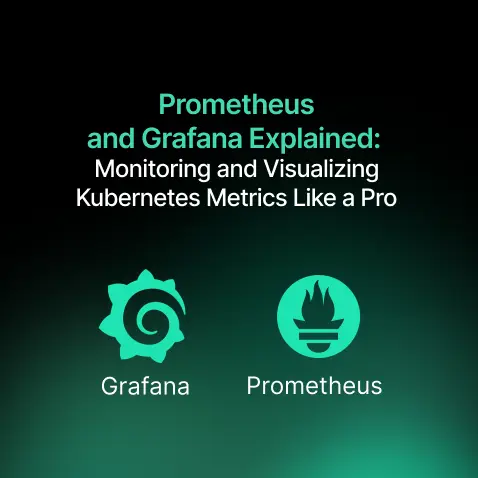Avoiding Common Kubernetes Security Misconfigurations with RBAC Best Practices
- Ankush Madaan
- Blog
About

Industries
- AWS, Kubernetes, RBAC, Security
Share Via
Introduction
Kubernetes is a popular container orchestration tool that allows you to deploy and manage containerized applications at scale. However, like any other technology, Kubernetes has its own security concerns that need to be addressed to ensure that your cluster is secure. One of the most critical security concerns in Kubernetes is misconfigured RBAC (Role-Based Access Control). RBAC is used to define and manage user access and permissions within the cluster. It defines roles, role bindings, and service accounts to control who can perform certain actions within the cluster. To avoid common Kubernetes security misconfigurations, it is essential to follow RBAC best practices. This includes:
- Limiting access to Kubernetes API: Only grant access to Kubernetes API resources that users and applications need to perform their functions. Use RBAC rules to restrict access to sensitive API objects, such as secrets and config maps.
- Implementing least privilege access: Grant users and applications the minimum level of access they need to perform their tasks. Avoid granting overly broad permissions that can be abused by attackers.
- Using namespaces for access control: Use namespaces to group related objects and control access to them. Apply RBAC rules to namespace scopes to restrict access to sensitive resources.
- Enforcing multi-factor authentication: Implement multi-factor authentication (MFA) for all users and service accounts accessing the Kubernetes API. This adds an extra layer of security to prevent unauthorised access.
- Monitoring RBAC activity: Use audit logs to track RBAC activity and detect suspicious behavior. Regularly review RBAC policies to ensure they are up-to-date and effective.
Let’s look at the most common Misconfigured permissions. This arise when the roles and role bindings are not configured correctly, allowing users or services to have more privileges than they should.
Here’s an example of a commonly made misconfiguration:
Let’s say a developer creates a new service account called myapp-sa for an application that they are deploying in the Kubernetes cluster. They set the service account’s permissions to include access to sensitive resources, such as secrets or other Kubernetes objects. However, they forget to create a role binding that associates the service account with a role that grants only the necessary permissions. As a result, the service account is granted more permissions than it should have.
Here’s an example YAML file that shows this misconfiguration:
In this example, the myapp-sa service account is created with full access to pods and secrets. However, the myapp-role-binding role binding is misconfigured because it references the myapp-role role, which grants full access to the resources. As a result, the myapp-sa service account is granted more permissions than it should have, potentially exposing sensitive data to unauthorized access. To avoid this misconfiguration, the myapp-role should be updated to grant only the necessary permissions, and the myapp-role-binding should be updated to reference the updated role. For example, if the application only requires read-only access to pods and secrets, the myapp-role can be updated to only grant get and list permissions.
Here’s an example YAML file with correct configuration:
With this update, the myapp-sa service account is granted only the necessary read-only permissions.
Tu further validate the permission you can run :
kubectl auth can-i <verb> <resource> –as=system:serviceaccount:<namespace>:<serviceaccountname> [-n <namespace>]

By following Kubernetes best practices and regularly reviewing RBAC configurations, you can minimize the risk of misconfigurations and ensure that your cluster is secure. Additionally, using tools such as Kube-bench and kubeaudit can help identify misconfigurations and vulnerabilities in Kubernetes clusters.
Frequently asked questions
RBAC (Role-Based Access Control) controls who can access Kubernetes resources and what actions they can perform. It’s important for securing the cluster by enforcing least-privilege access and preventing unauthorized actions.
Common misconfigurations include granting overly broad roles like cluster-admin, using overly permissive RoleBindings, and misconfiguring namespace-level access, which can expose sensitive resources.
Grant the least privilege necessary for each role, avoid cluster-admin roles, and scope access to specific namespaces and resources. Regularly audit and refine roles to match actual needs.
Roles are for namespace-level access, while ClusterRoles are for cluster-wide access. Use Roles for namespace-specific permissions and ClusterRoles for broader permissions.
Limit roles to specific tasks and namespaces, and regularly review permissions. Use the kubectl auth can-i command to verify whether a user has excessive access.
RoleBindings apply roles within a namespace, while ClusterRoleBindings apply roles across the entire cluster. Use RoleBindings to limit scope and reduce unnecessary access.
Use tools like kubectl, kubeaudit, or third-party solutions to review roles, bindings, and audit logs to ensure permissions are properly configured.
Avoid cluster-admin roles, scope roles narrowly, and regularly audit bindings. Consider additional security policies like OPA-Gatekeeper to enforce strict access control.
Service accounts provide specific permissions for pods and workloads. Use custom service accounts for different applications and restrict access to only necessary resources.
Create specific roles with restricted access to sensitive resources like secrets and assign them to trusted users or service accounts. Always scope roles tightly to avoid broad access.
Related Posts

Comprehensive Guide to HTTP Errors in DevOps: Causes, Scenarios, and Troubleshooting Steps
- Blog

Trivy: The Ultimate Open-Source Tool for Container Vulnerability Scanning and SBOM Generation
- Blog

Prometheus and Grafana Explained: Monitoring and Visualizing Kubernetes Metrics Like a Pro
- Blog

CI/CD Pipeline Failures Explained: Key Debugging Techniques to Resolve Build and Deployment Issues
- Blog

DevSecOps in Action: A Complete Guide to Secure CI/CD Workflows
- Blog

AWS WAF Explained: Protect Your APIs with Smart Rate Limiting
- Blog

